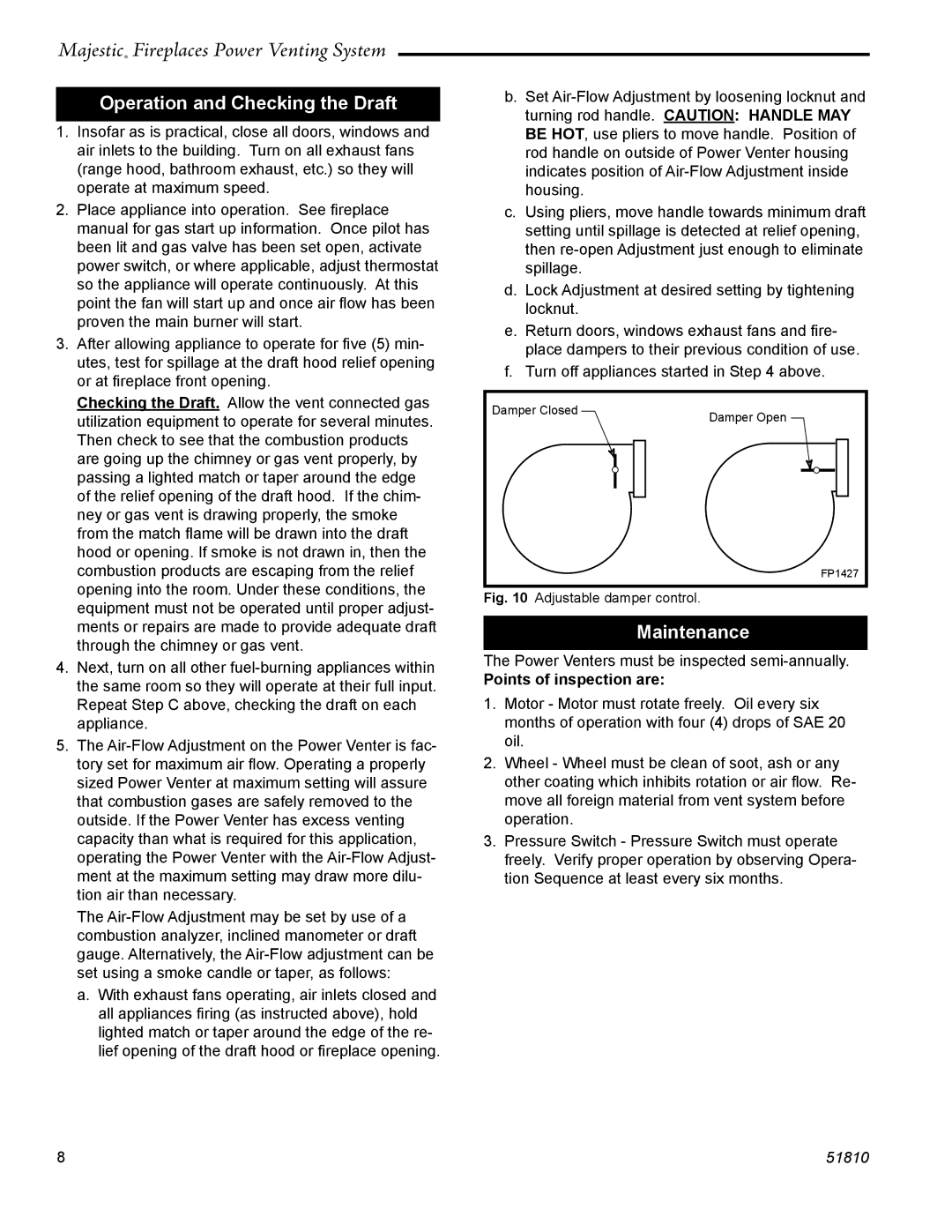
Majestic® Fireplaces Power Venting System
Operation and Checking the Draft
1.Insofar as is practical, close all doors, windows and air inlets to the building. Turn on all exhaust fans (range hood, bathroom exhaust, etc.) so they will operate at maximum speed.
2.Place appliance into operation. See fireplace manual for gas start up information. Once pilot has been lit and gas valve has been set open, activate power switch, or where applicable, adjust thermostat so the appliance will operate continuously. At this point the fan will start up and once air flow has been proven the main burner will start.
3.After allowing appliance to operate for five (5) min- utes, test for spillage at the draft hood relief opening or at fireplace front opening.
Checking the Draft. Allow the vent connected gas utilization equipment to operate for several minutes. Then check to see that the combustion products are going up the chimney or gas vent properly, by passing a lighted match or taper around the edge of the relief opening of the draft hood. If the chim- ney or gas vent is drawing properly, the smoke from the match flame will be drawn into the draft hood or opening. If smoke is not drawn in, then the combustion products are escaping from the relief opening into the room. Under these conditions, the equipment must not be operated until proper adjust- ments or repairs are made to provide adequate draft through the chimney or gas vent.
4.Next, turn on all other
5.The
The
a.With exhaust fans operating, air inlets closed and all appliances firing (as instructed above), hold lighted match or taper around the edge of the re- lief opening of the draft hood or fireplace opening.
b.Set
c.Using pliers, move handle towards minimum draft setting until spillage is detected at relief opening, then
d.Lock Adjustment at desired setting by tightening locknut.
e.Return doors, windows exhaust fans and fire- place dampers to their previous condition of use.
f.Turn off appliances started in Step 4 above.
Damper Closed | Damper Open |
|
FP1427
Fig. 10 Adjustable damper control.
Maintenance
The Power Venters must be inspected
Points of inspection are:
1.Motor - Motor must rotate freely. Oil every six months of operation with four (4) drops of SAE 20 oil.
2.Wheel - Wheel must be clean of soot, ash or any other coating which inhibits rotation or air flow. Re- move all foreign material from vent system before operation.
3.Pressure Switch - Pressure Switch must operate freely. Verify proper operation by observing Opera- tion Sequence at least every six months.
8 | 51810 |
